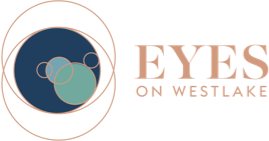Many people who wear eyeglasses consider adding contact lenses to their routine or switching outright. With this switch, many people mistakenly think their current glasses prescription is transferable to contact lenses. However, contact lens prescriptions differ from glasses prescriptions because contact lenses sit directly on the eye and require different measurements to best correct your vision.
Fortunately, optometrists offer contact lens exams and fittings that help you find the perfect pair of contact lenses for clear, crisp vision suited to your unique eye’s ideal needs.
Advantages of Contact Lenses Over Eyeglasses
Contact lenses offer several unique advantages over traditional eyeglasses that make them popular vision alternatives, including:
- Improved vision clarity: Contacts sit directly on your eye, eliminating the obstructions caused by frames and allowing for a wider field of view.
- Convenience: Contact lenses don’t slip down your nose, fog up due to humidity, or get in the way during physical activities.
- Aesthetic appeal: Contacts allow you to display your natural face and eye color without being hidden behind eyewear.
- Compatibility with sunglasses or goggles: You can wear non-prescription sunglasses, goggles, or other protective eyewear comfortably over contacts.
That said, contact lenses require proper care and commitment to maintain healthy eyes, making it critical to understand the difference between their prescription and eyeglasses.
Are Glasses Prescriptions & Contact Lens Prescriptions the Same?
The short answer is no—glasses and contact lens prescriptions are different. While they share some similarities, your contact lens prescription accounts for factors that are irrelevant to glasses.
Your Contact Lens Prescription Explained
A contact lens prescription includes more than just the power to correct your vision. Because contact lenses sit on the surface of your eye rather than a small distance away like glasses, this prescription also takes into account:
- Base Curve (BC): This measures the cornea’s curvature and ensures the lens fits properly in the eye.
- Diameter (DIA): For optimal comfort and fit, the contact lens must be the same size as your cornea.
- Brand or type of lens: Your prescription will specify the exact brand and type of contact lens that works best for you. Not all lenses are interchangeable.
- Power (PWR or SPH): This is the level of vision correction needed, similar to what’s found in glasses prescriptions.
Additionally, the expiration date on contact prescriptions guarantees that your eye health is monitored regularly to ensure effective and safe wear.
Glasses vs. Contact Lens Prescriptions: How to Read Each
Understanding how to read your prescriptions can clarify why they differ. Here’s a breakdown of how they appear:
Glasses Prescription Example:
- OD (right eye): -3.00
- OS (left eye): -2.50
- Axis/ Cylinder (optional for astigmatism): -1.00, 90 degrees
Contact Lens Prescription Example:
- OD (right eye): -3.25 BC 8.6 DIA 14.2
- OS (left eye): -2.75 BC 8.6 DIA 14.2
- Lens Brand or Type
A contact prescription contains additional measurements, such as the base curve, diameter, and lens type.
Can You Convert a Glasses Prescription to a Contact Lens Prescription?
No, prescriptions for glasses cannot be directly converted to contact lens prescriptions. The reason is the physical difference between them. Glasses rest about 12-14mm away from your eyes while contacts are in close contact with your corneas.
A new evaluation process is required for contacts to ensure accurate vision correction. This involves an in-person eye exam where your optometrist measures your eyes for size, shape, and overall health, matching you with the right lenses.
Pros & Cons of Different Types of Contact Lenses
When moving from glasses to contact lenses, you have several options, depending on your lifestyle, vision needs, and preferences.
1. Rigid Gas-Permeable (RGP) Lenses
Pros:
- Excellent for correcting astigmatism or higher levels of refractive errors.
- Allow more oxygen to reach the cornea compared to soft lenses.
- They last longer and are more durable than soft contacts.
Cons:
- Require an adaptation period as they may initially feel less comfortable.
- It can be dislodged more easily during physical activity.
2. Soft Contact Lenses
Pros:
- Extremely comfortable and easy to get used to.
- Available for a variety of prescriptions, including daily and extended wear options.
- Ideal for active individuals due to less chance of movement or being dislodged.
Cons:
- More prone to damage or tearing.
- Need regular replacement, which can be an additional cost factor
3. Specialty Contact Lenses (e.g., Multifocal, Toric, Scleral)
Pros:
- Multifocal lenses correct both distance and near vision, addressing presbyopia.
- Toric lenses are designed specifically for astigmatism correction.
- Scleral lenses provide comfort for individuals with dry eyes or keratoconus.
Cons:
- Generally more expensive and require specific fittings.
- Limited availability depending on the brand or eye condition.
What Should You Expect During a Contact Lens Exam?

Getting fitted for contact lenses is an exciting step but does involve some key processes to ensure they’re suitable for your eyes. Here’s what to anticipate:
- Vision tests: Your optometrist will determine your prescription based on visual needs.
- Eye measurements: Measurements for corneal curvature and pupil/iris size will be taken.
- Trial fitting: You’ll typically test a trial pair of lenses to assess comfort and fit.
- Training: If you’re new to contacts, you’ll receive instructions on inserting, removing, and caring for your lenses properly.
How Often Should You Have a Contact Lens Evaluation?
Experts recommend an annual eye exam and evlauations for contact lens wearers. Regular checkups ensure your eyes remain healthy and allow your optometrist to adjust your prescriptions if necessary. Changes in vision, corneal shape, or even lifestyle can all impact your contact lens needs.
Your Vision, Your Choice
Understanding the differences between glasses and contact lens prescriptions empowers you to make informed decisions about your vision care. While glasses and contacts have unique advantages, choosing the right option depends on your lifestyle, comfort, and preferences.
Eyes on Westlake specializes in fitting difficult-to-fit patients for contact lenses, which is why our professional fittings work for everyone! Contact us today to find contact lenses that suit your needs.




